Outdoor Climbing for Beginners
With over 5 million people participating in rock climbing activities each year in the United States alone, outdoor climbing has become a popular choice for adrenaline-seeking beginners. As novices take their first steps into this thrilling realm, the allure of conquering nature’s vertical landscapes beckons.
But what are the fundamental skills and equipment required to embark on this exhilarating journey? Let’s uncover the essential elements that will set beginners on the path to becoming adept climbers and ensure a safe and fulfilling experience in the great outdoors.
Key Points
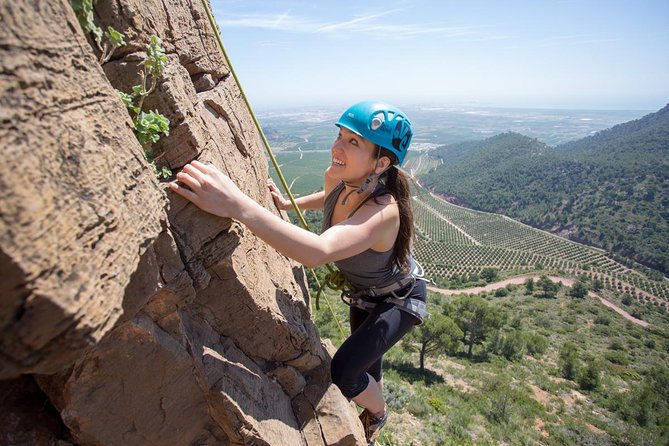
- Climbing etiquette and safety measures are fundamental for beginner climbers.
- Building endurance and practicing precise footwork are key skills to develop.
- Understanding body positioning and following gear maintenance guidelines are crucial.
- Route selection based on skill level, location, length, and exposure enhances the climbing experience.
Essential Gear for Outdoor Climbing
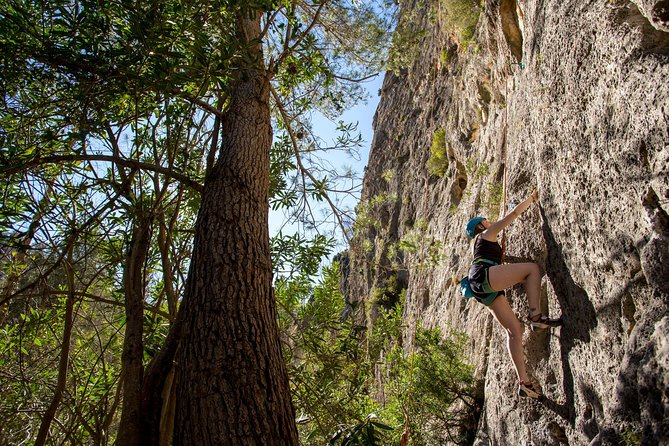
When embarking on outdoor climbing adventures, climbers must ensure they’ve the essential gear to guarantee safety and success on the rocks. Proper gear maintenance is crucial for the longevity and effectiveness of equipment. It’s vital to inspect ropes, harnesses, carabiners, and helmets regularly to identify any signs of wear and tear. Climbers should follow manufacturer guidelines for cleaning and storing gear to ensure optimal performance.
Plus, understanding and adhering to climbing etiquette is essential for a safe and enjoyable experience. This includes respecting other climbers, avoiding crowding at the base of routes, communicating effectively with partners, and leaving no trace. By prioritizing gear maintenance and climbing etiquette, climbers can enhance their outdoor climbing experience while promoting safety and courtesy within the climbing community.
Basic Techniques for Beginner Climbers
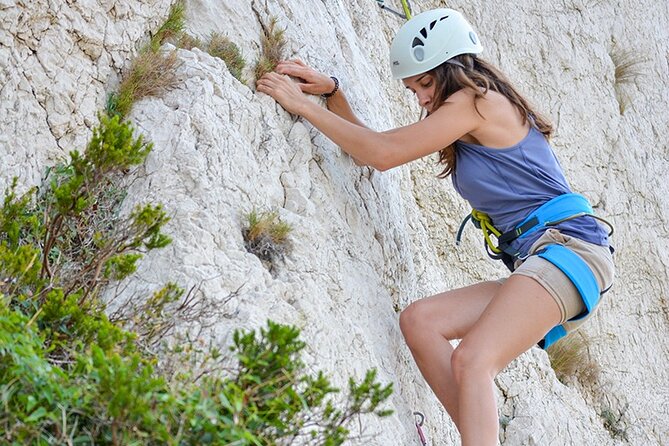
Beginner climbers typically start by mastering fundamental techniques that form the foundation of climbing skills. To progress in their climbing journey, they need to focus on climbing etiquette and building endurance.
Here are some key techniques for beginner climbers to work on:
-
Climbing Etiquette: Learning to communicate with other climbers, sharing the climbing space, and respecting the environment are essential aspects of climbing etiquette.
-
Building Endurance: Developing physical and mental stamina is crucial for tackling longer routes and more challenging climbs.
-
Footwork: Practicing precise foot placement and weight distribution to improve balance and conserve energy.
-
Body Positioning: Understanding how to position the body optimally on different holds to enhance stability and efficiency while climbing.
Safety Tips and Precautions to Remember
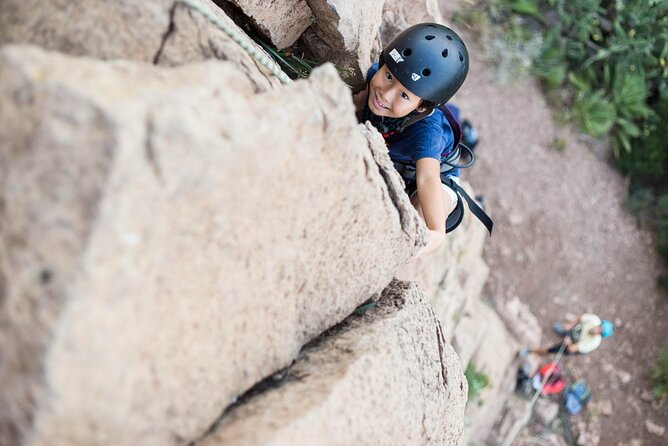
To ensure a safe and enjoyable outdoor climbing experience, climbers must prioritize understanding and implementing essential safety tips and precautions.
Before heading out, it’s crucial to check the weather conditions at the outdoor climbing locations. Climbing in adverse weather can be dangerous, so always be prepared for unexpected changes.
Plus, familiarize yourself with emergency procedures in case of any accidents or incidents. climbing etiquette is also vital for the safety of everyone on the rocks.
Respect other climbers, communicate effectively, and follow established guidelines to avoid conflicts and ensure a smooth climbing experience.
Choosing the Right Climbing Route
Choosing the right climbing route is essential for a successful outdoor climbing experience, as it can greatly impact the level of challenge and enjoyment for climbers. When selecting a route, climbers should consider the following factors:
- Route Difficulty: Evaluate the difficulty level based on your climbing skills to ensure a suitable challenge.
- Route Location: Choose routes in areas that match your preferences, whether it’s a scenic view or a particular type of rock formation.
- Route Length: Consider the length of the route to match your stamina and time constraints.
- Route Exposure: Take into account the level of exposure on the route, as some climbers may prefer more or less exposed climbs.
Considering these aspects will help climbers select the most suitable climbing route for an enjoyable outdoor experience.
Common Mistakes to Avoid as a Beginner

Making errors in judgment can hinder progress and safety when venturing into outdoor climbing as a newcomer. Understanding climbing etiquette is crucial to ensure a positive experience for both yourself and others. Beginners should learn and follow the established guidelines for climbing areas, such as yielding to other climbers, respecting the environment, and properly disposing of waste.
On top of that, mental preparation plays a significant role in climbing success. It’s essential to stay focused, manage fear, and make sound decisions while on the rock. Lack of mental readiness can lead to poor judgment and increased risk.
Common questions
Can I Bring My Own Climbing Gear or Is It Necessary to Use the Gear Provided?
When considering gear options, climbers may choose between rental gear or using their own equipment. For beginners, using the provided gear ensures safety and proper functionality. More advanced climbers might prefer their own gear for familiarity and personalized comfort.
How Long Does a Typical Outdoor Climbing Session Last for Beginners?
A typical outdoor climbing session for beginners usually lasts around 3-4 hours, including breaks. Proper attire is crucial for safety and comfort. The guide will teach essential climbing techniques throughout the session to enhance skills.
Are There Any Age Restrictions for Participating in Outdoor Climbing for Beginners?
Age restrictions may apply based on safety regulations. It’s essential to confirm any limitations related to participation. Understanding these guidelines ensures a smooth and secure experience for all climbers, especially beginners.
Is There a Weight Limit for Participants in the Outdoor Climbing Activity?
Weight restrictions ensure safety during the outdoor climbing activity. Participants must adhere to these guidelines as outlined in safety protocols. Climbing gear and equipment have weight limits for the well-being of all involved in the experience.
What Happens if the Weather Conditions Are Not Suitable for Outdoor Climbing on the Scheduled Day?
If the weather conditions are unsuitable for outdoor climbing on the scheduled day, there are indoor alternatives available. Participants can also explore rescheduling options with the provider to ensure a safe and enjoyable experience.
Last Words
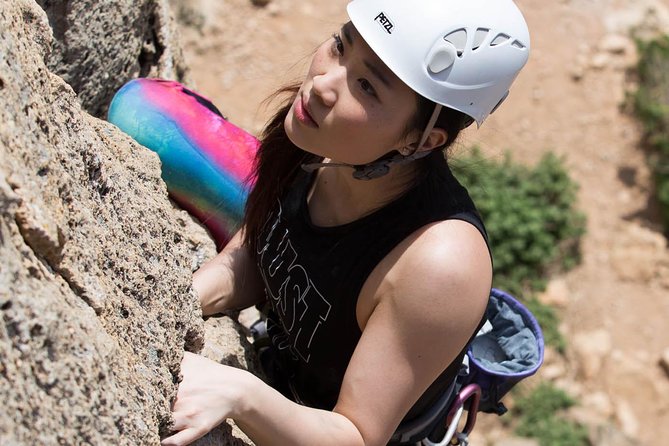
Set out on an exhilarating outdoor climbing adventure with the right gear, techniques, and safety precautions in place. Choose the perfect climbing route and avoid common beginner mistakes to make the most of this thrilling experience.
With the guidance of a qualified rock climbing guide, beginners can conquer the rugged beauty of Peñas de Guaita, Sagunto, Valencia, Spain, and create unforgettable memories amidst nature’s stunning backdrop.
Get set for an adrenaline-pumping journey like no other!